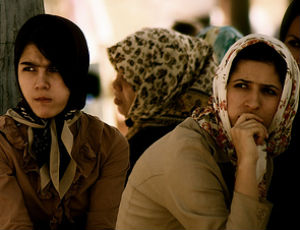While Azar Nafisi's Reading Lolita in Tehran has become a modern classic in its own right, there are plenty of other books detailing the lives of women in revolutionary Iran. For those not familiar with Nafisi's story, she was an English professor in Tehran who held private, secret seminars for a selected group of students on great Western books. That is, until Iran kicked her out and she immigrated to the United States. In Reading Lolita In Tehran, Nafisi talks not only about her secret classes but about her life before and after the revolution, and blisteringly condemns the intellectual bankruptcy of the Islamic Republic. So, you want to read more? Here you go:
The latest book about being young, female and Iranian is The Rose Hotel by Rahimeh Ahdalibian. The establishment of the title is run by Ahdalibian's family prior to the revolution and where she spends an idyllic childhood. After the revolution, the family immigrates to Southern California via London, but cannot escape the past. Ahdalibian's family survives addiction, alien customs and tragedy to allow her to flourish in her adopted country.
In the House of My Bibi by Nastaran Kherad speaks of the consequences of being drawn to the modern world in contemporary Iran. Kherad is raised by her bibi (Persian for grandmother), who passes on the prayers, traditions and wisdom that help Kherad survive arrest and imprisonment. Kherad, though tortured and subjected to solitary confinement, was lucky compared with tens of thousands of other students (including one of her brothers) who were executed, mostly for being young and not utterly submissive. Kherad eventually escapes to become an American academic.
Azadeh Moaveni's parents fled Iran during the Islamic Revolution, and she grew up in Southern California. Comfortable neither in Iranian exile culture nor that of mainstream America, Moaveni becomes a journalist and heads off to find her roots and report on her ancestral country. She arrives during a period of relative relaxation of rules, with the occasional protest against the regime and constant drug-filled parties among the young. After 9/11, President Bush's designation of Iran as part of the Axis of Evil is not helpful. Lipstick Jihad, however, shows that Iran is a surprisingly modern country.
Gelareh Asayeh spends her childhood in pre-revolutionary Iran and tried to balance that lifestyle with growing up in Florida. Along the way, she deals with racism, wanting to be seen as Western (meaning sophisticated and educated), and the fact that most Iranians see their culture as inferior to the West. As a mother in her thirties, she comes to some equilibrium in raising her biracial children in America with a strong grounding in the heritage of Iran.
In Journey From the Land of No, Roya Hakakian is 12 when the Islamic Revolution strikes and is a part of it. One has to remember, this is an uprising primarily by the young. However, Hakakian is Jewish, and the new regime does not look kindly on this particular People of the Book. Eventually, her family has to flee, and Hakakian sees the revolution for what it has become.



Add a comment to: 5 Books to Read After You Read “Reading Lolita in Tehran”